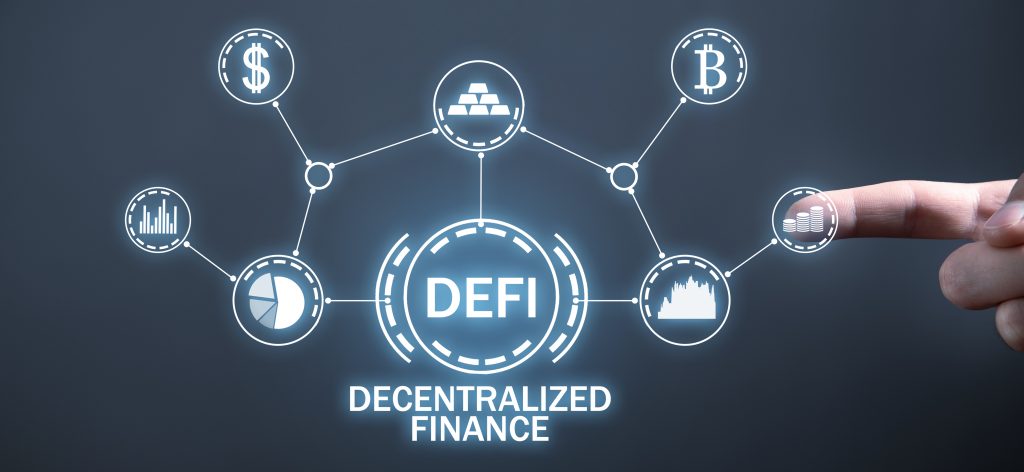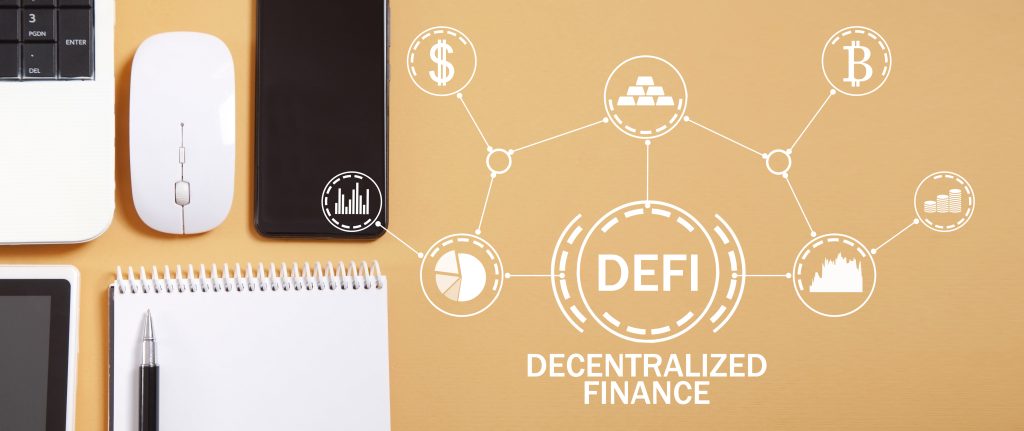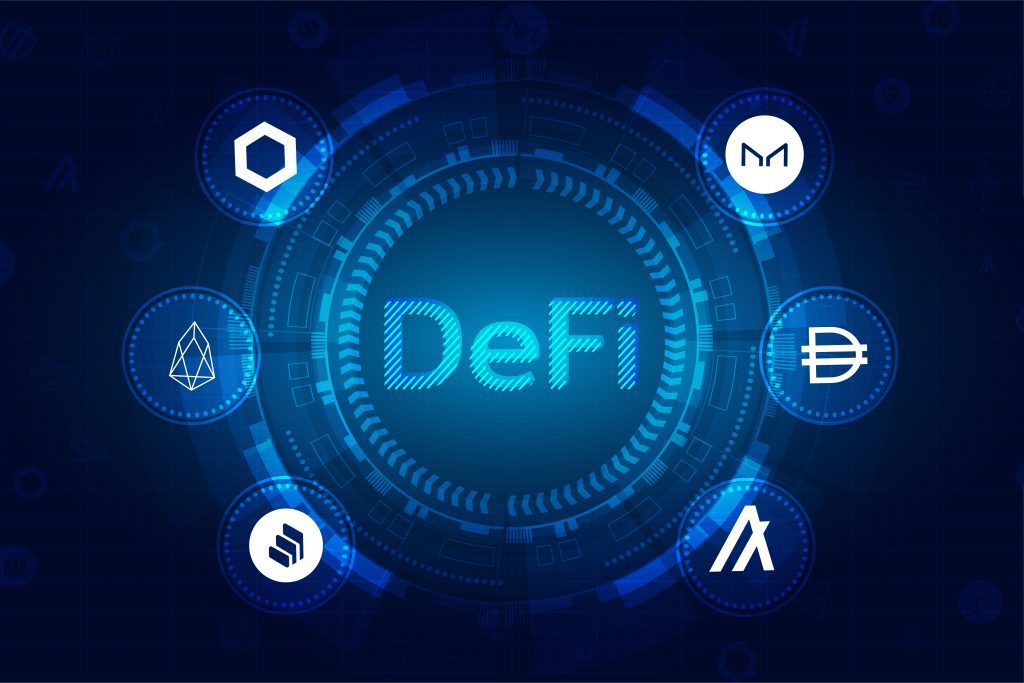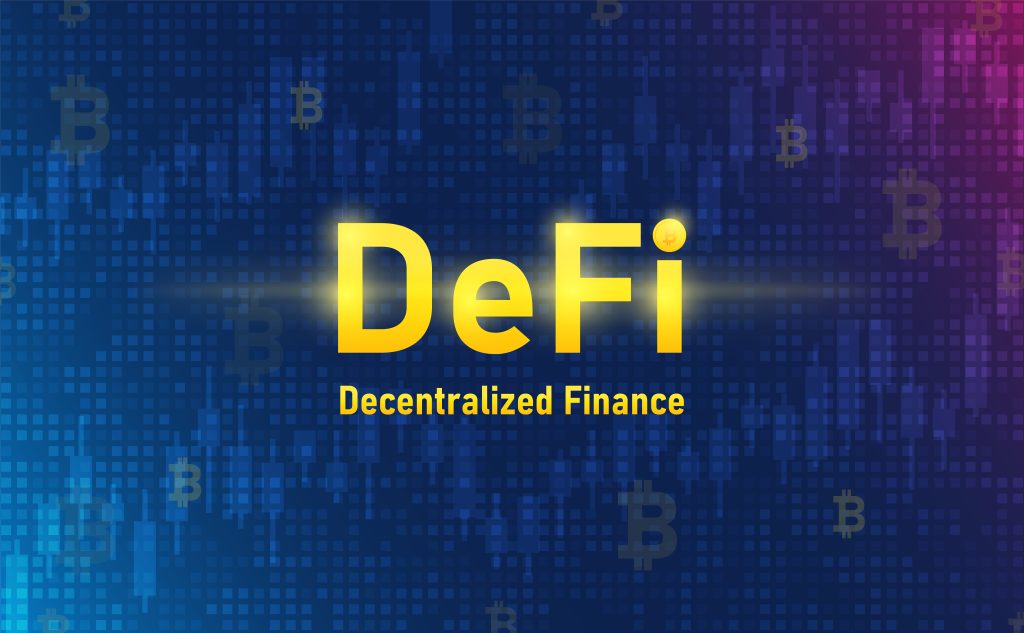The world of finance is evolving, and Decentralized Finance (DeFi) is at the forefront of this change. DeFi is growing in importance as it challenges traditional financial institutions and offers new opportunities for individuals and businesses. In this article, we’ll explore the ins and outs of DeFi, its potential to revolutionize the financial ecosystem, and how it can unlock a world of possibilities for users around the globe.
What is Decentralized Finance (DeFi)?


Decentralized Finance (DeFi) is an innovative financial technology that aims to democratize access to financial services by removing intermediaries like banks and brokerages. By leveraging blockchain technology and other emerging technologies, DeFi empowers individuals to participate in peer-to-peer financial transactions and access services like lending, trading, and borrowing.
To illustrate the concept of DeFi, think of it as a bazaar or a farmer’s market for financial services. Just like how you can buy produce directly from local farmers, DeFi allows you to access financial services in a decentralized way directly from peers, without the need for intermediaries such as banks or financial institutions. This open, decentralized marketplace enables a more inclusive, efficient, and cost-effective financial ecosystem.
The Importance of DeFi


DeFi has the potential to disrupt established financial institutions and reshape the global financial landscape. By providing more accessible, transparent, and cost-effective financial services, DeFi can drive financial inclusion and promote economic growth, especially in underserved communities.
As DeFi continues to gain traction, it is breaking down barriers to entry for people who have been historically excluded from traditional financial systems. This democratization of finance allows individuals and businesses to access a wide range of services, regardless of their location or socioeconomic status. Furthermore, DeFi has the potential to improve efficiency and reduce costs in the financial sector, as it eliminates the need for intermediaries and streamlines transactions.
In addition to promoting financial inclusion, DeFi can spur innovation in the financial sector. By offering an open and permissionless platform, DeFi encourages the development of new financial products and services, fostering competition and driving improvements in the industry. As a result, DeFi can contribute to a more resilient and dynamic financial ecosystem that better serves the needs of individuals and businesses worldwide.
Core Components of DeFi
DeFi is built on a foundation of innovative technologies that work together to create a decentralized financial ecosystem. Let’s dive into the core components that make DeFi possible: blockchain, smart contracts, and decentralized applications (dApps).
Blockchain
Blockchain is the underlying technology that powers DeFi. It is a distributed ledger that securely records transactions in a transparent and tamper-proof manner. By providing a decentralized and trustless infrastructure, blockchain enables the various participants in a DeFi ecosystem to interact directly with one another, without the need for intermediaries.
In the context of DeFi, blockchain technology ensures that transactions are secure, transparent, and verifiable. It also enables the creation of digital assets, such as cryptocurrencies and tokens, which form the basis for many DeFi applications and services.
Smart contracts and their function in DeFi
Smart contracts are self-executing agreements that run on blockchain networks, such as Ethereum. They consist of lines of code that define the terms and conditions of a contract, and they automatically execute and enforce these terms when the specified conditions are met.
In DeFi, smart contracts play a crucial role in automating transactions and providing a trustless environment for users. By removing the need for intermediaries, smart contracts help to reduce transaction costs and increase efficiency. They enable various DeFi applications and services, such as decentralized exchanges, lending platforms, and yield farming, by automating complex processes and ensuring that all parties adhere to the agreed-upon terms.
Decentralized Applications (dApps)
Decentralized applications (dApps) are software applications that run on blockchain networks and leverage smart contracts to provide users with a wide range of DeFi services and solutions. dApps are decentralized by nature, meaning they are not controlled by a single entity or organization. This ensures that users retain control over their assets and transactions, and it fosters greater transparency and trust in the system.
dApps play a vital role in the DeFi ecosystem, as they serve as the user interface for various DeFi services. Examples of dApps include decentralized exchanges, lending platforms, and asset management tools. By interacting with these dApps, users can access a wide range of DeFi services, from trading and borrowing to earning interest on their assets.
How Does DeFi Work?


DeFi operates through a complex network of interconnected technologies, all working together to facilitate decentralized financial transactions and services. Let’s explore the mechanics behind DeFi and how it functions in practice.
Tokenization
Tokenization is the process of converting a physical or digital asset into a digital token that can be easily traded, exchanged, and managed on a blockchain network. In DeFi, tokenization enables the creation of digital assets, such as cryptocurrencies and other tokens, that represent various types of value, including stablecoins pegged to fiat currencies, governance tokens, and non-fungible tokens (NFTs) and everything thanks to Decentralized Finance.
These tokens are essential for many DeFi services, as they provide a standardized and interoperable means of transferring value within the ecosystem. They also enable the creation of decentralized markets and liquidity pools, where users can trade and invest in a wide range of digital assets.
Oracles
Oracles are third-party services that provide external data to smart contracts running on blockchain networks. Also, they have the necessity of data from outside sources, such as exchange rates, asset prices, and other data points, to blockchains, which are closed systems with limited access to real-world information.
In DeFi, oracles play a crucial role in ensuring that smart contracts have accurate and up-to-date information to function properly. For example, lending platforms may use oracles to obtain current interest rates or collateral values, while decentralized exchanges may rely on them to obtain accurate asset prices.
Consensus Mechanisms
Consensus mechanisms are the protocols used by blockchain networks to validate and secure transactions. They ensure that all participants in the network agree on the current state of the blockchain and prevent malicious actors from tampering with the data.
You can find various blockchain networks employ several consensus mechanisms, such as Proof of Work, Proof of Stake, and Delegated Proof of Stake. Each of these mechanisms has its own strengths and weaknesses in terms of security, scalability, and energy efficiency.
In the context of DeFi, consensus mechanisms help to secure the underlying blockchain network and ensure that all transactions and smart contracts execute in a reliable and transparent manner. This is essential for maintaining trust in the DeFi ecosystem and for attracting users to adopt decentralized financial services.
Popular DeFi Use Cases


DeFi has opened the door to numerous innovative financial applications that are transforming the way we interact with money and financial services. Here, we’ll explore some of the most popular and well-known use cases for DeFi.
Decentralized Exchanges (DEX)
Decentralized exchanges (DEXs) facilitate the trustless and permissionless trading of cryptocurrencies and other digital assets like buying Coinary Tokens. Unlike centralized exchanges, which require users to deposit their funds with a centralized authority, DEXs allow users to trade directly from their own wallets, without having to trust a third party.
Some popular DEXs include:
- Uniswap: A leading Ethereum-based DEX that allows users to trade a wide range of tokens using an innovative automated market-making mechanism.
- SushiSwap: A community-driven DEX that offers liquidity mining rewards and other incentives for users who provide liquidity.
Lending and Borrowing Platforms
DeFi lending and borrowing platforms enable users to earn interest on their assets or borrow funds without relying on traditional financial institutions. These platforms often use smart contracts to automate the lending process, making it possible to provide financial services in a transparent and decentralized manner.
Examples of popular lending and borrowing platforms include:
- Aave: A decentralized lending protocol that allows users to earn interest on their deposits and borrow a variety of cryptocurrencies.
- Compound: A popular Ethereum-based lending platform that enables users to earn interest on their assets and borrow against their deposited collateral.
- MakerDAO: A decentralized credit platform that allows users to borrow the stablecoin DAI against their collateral, typically in the form of Ethereum or other supported assets.
Yield Farming and Liquidity Mining
Yield farming and liquidity mining are innovative methods for users to generate passive income by providing liquidity to DeFi platforms. Users who participate in yield farming typically deposit their assets into a liquidity pool, which is then used to facilitate trading on DEXs or provide loans on lending platforms. In return, users earn a portion of the platform’s trading fees or interest payments, as well as additional rewards in the form of governance tokens.
Some popular platforms for yield farming and liquidity mining include:
- PancakeSwap: is a popular DEX on the Binance Smart Chain that offers various yield farming opportunities for users who provide liquidity to its pools.
- Yearn Finance: A DeFi platform that automatically optimizes yield farming strategies for users, aiming to maximize returns on their deposited assets.
- Curve Finance: A decentralized exchange focused on stablecoins and low-slippage trading, which also offers yield farming opportunities for users who provide liquidity.
Starting with Decentralized Finance
Embarking on your DeFi journey might seem daunting at first, but it’s easier than you think. By following a few straightforward steps, you’ll be on your way to exploring the world of decentralized finance. Here’s a quick overview of the process:
- Choose a wallet
- Acquire cryptocurrency or a token
- Transfer funds to your wallet
- Connect your wallet to DeFi platforms
- Interact with dApps
Risks and Challenges in DeFi


DeFi comes with its fair share of risks and challenges, including:
- Smart contract vulnerabilities: Security flaws in smart contracts can lead to the loss of funds, as seen in past hacks and exploits.
- Regulatory uncertainty: The evolving regulatory landscape may introduce new requirements or restrictions for DeFi platforms and users.
- Market volatility: Cryptocurrency markets can be highly volatile, resulting in significant financial losses for users who borrow or trade on DeFi platforms.
- Liquidity risks: DeFi platforms rely on user-provided liquidity, which can be subject to sudden withdrawals or market shocks, leading to potential losses.
- User error: DeFi platforms typically require a higher level of technical knowledge, and mistakes can result in the loss of funds.
Benefits of DeFi
DeFi offers several advantages over traditional financial services, including:
- Accessibility: DeFi platforms are open to anyone with an internet connection and a compatible wallet, breaking down barriers to entry for financial services.
- Transparency: Blockchain technology ensures that all transactions and agreements are recorded on a public ledger, increasing trust and accountability.
- Control: Users maintain control of their assets, as funds are stored in their wallets rather than with a centralized authority.
- Interoperability: DeFi platforms often leverage common standards and protocols, enabling seamless interaction between different services.
- Innovation: The decentralized nature of DeFi fosters rapid innovation, with new platforms and services emerging regularly.
Conclusion
DeFi has the potential to transform the financial landscape by democratizing access to financial services and fostering innovation. While challenges and risks remain, DeFi offers numerous benefits and use cases that can empower individuals and businesses alike. By understanding the core components, mechanics, and applications of Decentralized Finance, you can unlock new financial opportunities and participate in the evolution of the global financial ecosystem.









